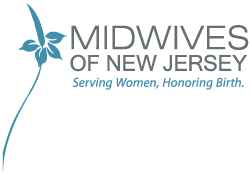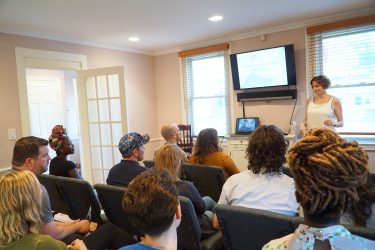Are Birthing Classes Worth it?
In the current climate of obstetrics, it is incredibly important to enter your birth informed and empowered. Childbirth education classes are not necessary to have a baby but birth is much less scary when you know what to expect. A woman who has actively sought knowledge throughout her pregnancy will come to her birth able to participate in the decisions being made about herself and her baby at the time of birth. While the pregnant woman can depend on the hormones of pregnancy and birth to guide her along during the actual delivery, partners have no such crutch. Childbirth classes are very valuable for partners to become the support and advocate they need to be while the mother is working hard to give birth.
Childbirth classes have been shown to reduce a first-time mom’s risk of cesarean birth by as much as 20% (Source)!
Most childbirth classes primarily focus on basic anatomy and physiology of the female reproductive system, medical terminology and hospital policies. These things are important. Many people, especially men, have no real working knowledge of how a woman’s body works and how it is possible for something so large to get out of a place so small! It is important to know things like how the uterus, cervix and vagina work together during the birth, that there is a bag of fluid around the baby that could burst and how the baby will look after being pushed through a pelvis.
Once you are in labor, you will want to know what people are talking about when they are discussing you, your body and your baby. Childbirth classes teach couples the key terminology used during labor and delivery and help them to be more confident in their interactions with medical personnel.
So much of what happens on a typical labor and delivery unit is completely foreign to a young, healthy woman. The classes explain what will happen when you arrive at the hospital; what door to use, where to park and common admission procedures such as blood work, vital signs, fetal monitoring, history taking and cervical exam. The concept of “triage” will be explained because you may not be ready for admission when you arrive at labor and delivery. So instead of being fully admitted, you may be evaluated in one part of the unit and then moved to an actual labor room if it is the right time or, if it is too early, you may be given the opportunity to go home for a bit. The hospital policies about eating and drinking in labor, being out of bed or having an IV are also frequently reviewed. There is often a tour of the unit included with the classes or offered by the facility you have chosen for your birth.
While it may seem like these things are not helpful when in actual labor, and many women say their classes did not help, the most considerable way this information helps is to decrease fear. Understanding the physiology, the phraseology and the policy will significantly reduce the fear of the unknown. What women are really saying when they say that their class curriculum didn’t help them in labor, is that the class didn’t take away their pain. Childbirth classes do not contain the magical technique that makes labor comfortable but hopefully, they will give you the confidence, information and coping techniques to make it tolerable.
Types of Childbirth Classes
- Hospital-Based Childbirth Classes – intended to orient their clients to childbirth in their hospital. Many times, the classes are taught by the staff on labor and delivery. My opinion is that hospital-based classes are not the best classes to take when you are planning a low-intervention birth. Unless you happen to be in a hospital with a very low cesarean rate, Obstetricians that do tub births and doulas staffed on the unit, the classes mostly help create compliant patients for the OB’s and hospital staff.
- Lamaze Classes – the most widely recognized “type” of class. The original class had a focus on breathing in various patterns to help a woman distract herself from the discomfort. The current classes are very evidence-based and focus on 6 Healthy Birth practices.
- Bradley Method Classes– a 12-week course of classes that work intensely to prepare a couple for natural childbirth. These classes focus on getting a mother in optimal condition for birth and teaches her partner how to be the best possible coach.
- Hypnobirthing Classes– beyond the general anatomy and physiology, hypnobirthing focuses on teaching the woman how to turn inward and use hypnosis techniques to cope with the discomforts of labor. Women are expected to practice the relaxation/hypnosis techniques for many hours outside the actual classes to get the best effect.
There are other types of classes available and for the most part, they are all worthwhile.
Additional Places to Find Good Information
Our practice gives every woman the book Ina May’s Guide to Childbirth. This book contains the wisdom from the years of practice of many midwives from “the Farm” in Tennessee. We believe Ina May’s thinking is inspiring and confidence-building. Her objective was to write a book about childbirth that wasn’t scary. Our clients have loved this book for years.
Another tremendous resource is Rebecca Dekker’s website Evidence Based Birth. Rebecca has worked hard to interpret medical studies for all people to understand. Understanding that the evidence supports things like VBAC, intermittent fetal monitoring and delayed induction when your water breaks at term will help empower you when making decisions with your provider.
YouTube has so many videos about natural childbirth, waterbirth and homebirth to view. Since most women are terrified of childbirth, viewing women giving birth without medication but also without a bunch of other medical interventions could help to reduce the fear of this natural process. Our practice has a YouTube channel where we share a look into our work and our client’s births in a series called Our Lives, Our Births. Conversely, watching birth on many television shows that are intended to be sensational and frightening leads women and their partners to believe that every woman and her baby are on the brink of disaster during childbirth. This does women a huge disservice because nothing could be further from the truth. Birth is as safe as life ever gets.
Other Moms for Support
In a very short time in the very long history of birth, normal, natural childbirth has essentially become extinct. Women no longer trust their bodies to care for their babies or to give birth independently. We have bought the idea that we have evolved to a point where our pelvises are too small for the big, strapping babies in America. And this was a rapid evolution since the majority of babies in the U.S.A. were born at home less than 100 years ago. So finding a like-minded group of women can truly help a woman believe that a low-intervention birth can still be accomplished. Generally, groups that focus on natural or holistic living attract women that approach their pregnancies and births more naturally. If you ever hear about a friend or a friend of a friend who had a natural childbirth or a waterbirth or a homebirth, be sure to get in touch and speak with them about their experience.
When a woman wants to avoid a surgical birth, she must be aware of all the reasons she might end up in the operating room and then learn how to avoid those situations if possible. She has to learn the lingo, the culture of birth and she needs to have all her ducks in a row (so she needs to figure out what ducks to choose). This series of posts is about how to avoid a cesarean. I believe a woman should learn about and implement all the steps in this book. This is no time to simply trust that it will all be “okay”. Okay is not good enough for you and your family.
Read the next post in the Avoiding Cesarean series on Exercise in Pregnancy:








